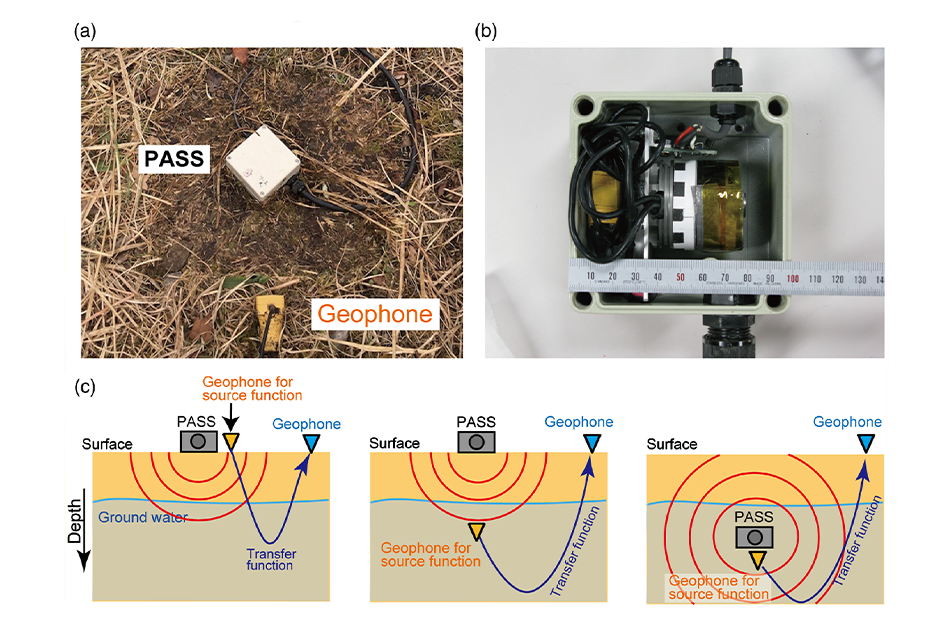Share this
Authors
Yusuke Kakiuchi, Hiro Nimiya, Takeshi Tsuji
Abstract
To monitor the volcanoes at a high spatiotemporal resolution, we introduce the singular value decomposition-based Wiener filter and the three-component waveforms in ambient noise velocity monitoring. The continuous ambient noise data from 63 stations around Mt. Fuji and Mt. Hakone, Japan, during the January-September 2011 were analyzed to estimate the seismic velocity variations at a 1-day temporal resolution, allowing us to distinguish the velocity drops caused by the 2011 Mw 9.0 Tohoku-oki and the Mw 6.0 East Shizuoka earthquake. The velocity drop during the Tohoku-oki earthquake was large in volcanic areas and was larger around Mt. Hakone than Mt. Fuji. This difference is possibly due to the existence of fluid- and gas-rich zones at shallower depths and a higher crack density around Mt. Hakone. In addition, the velocity drop at Mt. Fuji during the Tohoku-oki and the East Shizuoka earthquake was the same level, despite larger static stress changes beneath Mt. Fuji during the East Shizuoka earthquake. We interpret this inconsistency between the velocity drops and static stress changes to arise from incomplete recovery of the generated cracks during the Tohoku-oki earthquake when the East Shizuoka earthquake occurred. This study also investigates the spatial variations in recovery speed and recovery amount, finding slow recovery speeds in the volcanic areas and fault areas, possibly due to larger crack densities in the crust. Furthermore, we observe the lowest velocity recovery amount in the volcanic areas, which is likely attributed to the maintained increase in pore pressure due to the volcanic gas bubbles.
Journal of Geophysical Research - Solid Earth: https://agupubs.onlinelibrary.wiley.com/doi/10.1029/2023JB027978
These Related Stories

